What Are Skin Tags?
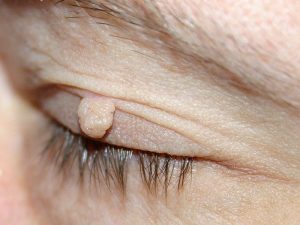
Skin tags, also called acrochordon, are tiny but painless benign growths on the skin, which usually hang by thin stalks called peduncles.
They appear in clusters, which can be unsightly though they are skin-colored most of the time, and they also appear singly.
But they are mostly harmless protrusions on the skin. They usually appear on older men and women, though the reason why this is so is not clear.
Medically, skin tags have different names they go by. These names, sometimes, make them sound more serious and fatalistic than they actually are.
So if you see names like polyp or fibro epithelial polyp, fibroma, acrochordon or cutaneous tag/papilloma, then the topic is skin tags.
Learn more about skin tags as we go on.
Table of Contents
Identifying Skin Tags
Different skin growths may look like a tag and it is easy to confuse a mole for one. So how do you tell one from the other?
A skin tag would normally hang from a peduncle and remain skin-colored. On a few occasions, it could be brown but hardly does it turn black or red. And it is usually tiny, sometimes as small as one millimeter. Other times, it could grow as large as 1 centimeter (source).
On the other hand, moles and warts are larger and dark-colored. They do not hang by this thin stalk and are usually symptoms for something worse.
If you have a new growth on your skin, flesh-colored or not, check if it is hanging by a stalk. And if it is, give it a few days or weeks to see if it will increase in size or change color. But if none of these happens, it is most likely a skin tag (source).
Misconceptions
Do Skin Tags Become Cancerous?
With the increase in types of cancers and the cases of people who have them, there is a general fear of the disease.
Any strange or previously unseen skin lesion is quickly thought to be an early onset of cancer. There is nothing wrong with this; in fact, it is the sensible thought to have.
But skin tags really aren’t cancerous and don’t become cancerous. As was mentioned in the introduction, they are benign and hardly ever turn malignant.
Yes, they are tumors, albeit tiny ones, and shouldn’t be there. But when they form, they are not harbingers of cancer. They are not symptomatic, either, meaning that they show no symptoms like pus, smell or bleeding (source).

Are Skin Tags Dangerous?
No, they are not. They are not proof that something is fatally wrong. They usually just remain the size and color for as long as they are left alone.
However, skin tags sometimes can get irritated when there is friction from jewelry, skin or clothes on them. This irritation can be alleviated when the friction stops.
But if you do have tiny tumors which initially seem to be skin tags but which begin to increase in size, change color or become painful, it is best to go see a doctor. They may not be skin tags.
Generally, it is recommended to keep an eye on any skin lesion or tiny tumor, whether they are painful and colorless or not (source).
If They Are Removed, Are They More Likely to Spread?
Not at all. This is just like people who think cutting hair gives it the chance to grow faster; it is a misconception.
Given, there are high chances more tags would grow as you get older but this could be because you are more prone to grow them than other people. However, removing old ones doesn’t cause the growth of new ones.
Skin tags are equally not contagious, unlike some other skin conditions. Someone who has them can’t transfer them to you simply because they have bodily contact with you (source).
Likely Causes of Skin Tags
Presently, there are no clear, laid-out reasons why these tags appear. It could happen when blood vessels and collagen clusters become trapped within thick folds of skin (source).
There are some probable factors that could contribute to their growth when this happens.
The environment could be a reason. Genetics is another reason that has been put forth. Hormonal change is yet another probable reason. Then constant friction of skin on skin or skin on tight clothes could trigger the onset of skin tags (source).
There are two health reasons that have been brought up as contributors to the development of skin tags. They are diabetes and obesity. Even though it hasn’t been narrowed down how these health factors contribute, it has been noticed that skin tags are prevalent among diabetic and obese people (source).
However, one thing is clear: some people seem to have more of them than other people. This could be attributed to genes or skin-to-skin friction.
Below is a more comprehensive, but not exhaustive, list of likely risk factors for having skin tags:
Human Papilloma Virus (HPV)
The human papilloma virus is a very common virus, with more than 100 variants. It is easily transmitted through bodily contact and sex, and it can affect the mouth, genitals and throat (source).
The infections caused by HPV have been pointed to as the source of different skin lesions which are benign. Some of these lesions show up as skin tags.
In a research carried out on north Indians, it was shown that HPV was present in a large percentage of skin tags (source).
Diabetes
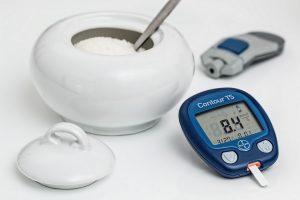
When the human body becomes unable to properly process sugar, it accumulates in the bloodstream and leads to diabetes.
It is not clear yet how diabetes could lead to the appearance of skin tags. But it could be due to the body resisting insulin, the hormone that transports sugar to parts of the body. They could also be a sign that the resistance of insulin has increased in a diabetic person.
Skin tags don’t necessarily equate having diabetes. But when there are too many of them, doctors may advise testing for diabetes (source).
High Levels of Cholesterol
Too much cholesterol and other natural fats in the body could form tiny growths around the eyes. While these growths look like skin tags, they are actually something else called xanthelasmata.
The connection between this and skin tags is not clear at this point but if these tags develop, they could point to high levels of cholesterol.
Obesity
Just as diabetes is associated with skin tags, it is also associated with obesity. While diabetic people are not always obese, most obese people are liable to become diabetic.
Skin tags are an indication of obesity. Another way obesity contributes to their growth is through friction between folded and thick skin.
Losing weight does not necessarily mean the tags would go away automatically. They still need to be removed. But it gives you a better chance of not developing more.
Genetics
Some people with skin tags may have them only because of their genes. Genetics could play a role in their appearance because whole family members have them.
Hormonal Changes in Women
Naturally, women are more prone to imbalance in hormones than men. There are a number of reasons why this could happen, like pregnancy and menstruation.
While there are so many ways the changes could manifest, one of them is skin tags or other abnormal growths (source).
High Blood Pressure
Just like high cholesterol, skin tags could be symptomatic of the onset of high BP (source).
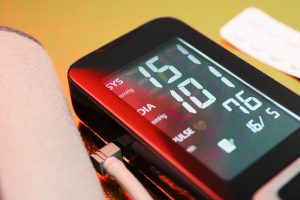
There are cases where none of these likely causes are present yet skin tags grow. This is one of the reasons why medically, there is no known reason why they develop in the first place. And most people will have them in their lifetime.
They can start at any time and stop suddenly. But more likely than not, they start and never stop. This does not mean they will grow frequently. You could develop just 5 in a lifetime; on the flip side, you could develop 100.
Check out these interesting skin care product reviews/articles:
Clearasil Gentle Prevention Daily Clean Wash – Detailed Review
How to Prevent Loose Skin after Gastric Bypass – In-depth Answer
How to Get Smooth Armpit Skin – Detailed Answer
Which Surgical Procedure Removes Superficial Skin Lesions with Scraping?
Neutrogena Men Skin Clearing Acne Wash – Comprehensive Review
What Can Cause Itchy Skin without a Rash? – In-depth Answer
Who Can Develop Skin Tags?
It is true that these tags are likelier to develop after mid-life, for both women and men. The skin becomes more susceptible to folds and wrinkles, which encourage friction and lead to the development of skin tags.
But children and even babies could get them in the folds on their skin. Growing children run the risk of developing these tags on their eyelids from constantly rubbing their eyes. Older ones or teens who are deeply involved in sports could get them from body contact (source).
What Parts of the Body Are Skin Tags Most Likely to Spring Up?
They can appear on any part of the body but the likeliest places that skin tags could appear in are areas where there are folds. They could also appear in areas that are easily prone to friction or constant rubbing.
Such areas include the following:
Underarms
Groin area
Under breasts
Eyelids
Neck
Upper chest
Back of the neck (source)
Using the wrong lotion or cream for your skin or face could lead to irritation on the tags. So you may want to check any new skincare product to be sure it is the right one for you. To learn how to choose the right one, read this article.
When You Should Worry
Many tiny tumors on the skin get mistaken for skin tags. So it is good to reiterate here that skin tags are harmless tiny skin tumors. But if they are painful or really dark, it is best you see your doctor.
Rarely does this happen so if it does, then something has gone terribly wrong. In any case, it is important to let your doctor know about any new growths on your skin (source).
Can You Cut Skin Tags Off Yourself?
Skin tags are easy to remove, even at home. But it is not advisable to do that by yourself, without consulting a doctor.
This is because there could be excessive bleeding, fatal incisions or infections from trying to remove them yourself.
If they are very tiny, you could get medical advice and remove them, using a very thin surgical thread or dental floss to cut off the flow of blood to them.
However, this is not, in any way, recommended. We advise a visit to a doctor to be sure of what the tiny tumors are, to begin with. Then, you see if they can be removed by you at home (source) (source).
Removing Skin Tags
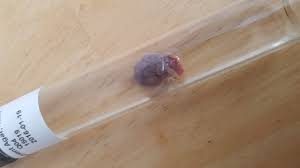
Usually, they are small and many people walk around today with them. Normally, people like to remove them for reasons that border on aesthetics.
The point is that they don’t give troubles so don’t need to be removed. But if you must, you could have your doctor clip the really small ones off. If they are large, they may require a minor surgery.
Some of the non-invasive procedures that could be used are:
Cryotherapy
This is freezing the tags off using liquid nitrogen.
The nitrogen is usually very cold, past freezing point. It is not painful but it numbs the area and stiffens the tags.
After about one or two weeks, the tags will fall off by themselves, without any extra push. However, there is a chance there will be irritation on the skin around those areas.
Excision
It is cutting the tags off with a scalpel. This could be done using anesthesia or not. Due to the fact skin tags are not painful, some have done excisions without numbing the areas.
This, however, rids the skin of the tags right there. You may bleed a little but you go home without them.
Cauterization
This is burning the tags off with electrolysis. An electrode sends a current into the growths. The current causes the tags to dry off and fall on their own. There is no harm or pain to you during this procedure (source).
Ligation
It is cutting off the supply of blood to the tags. Your doctor could use thin threads or dental floss to do this.
Tying a thread around the tags cuts off the supply of blood to them that keep them alive. When this happens, the tags shrivel and die. Then they fall off.
Sometimes, the skin tags would just fall off without any of these treatments, even though this is not common. But whatever the removal procedure used, you should prepare your mind for other tags to appear. But this is not due to the removal of old ones (source) (source) (source).
Home Remedies Suitable for Skin Tags
If you would rather get your skin tags removed at home, there are some easy ways to do this. This is especially true if the tags are on sensitive areas like your eyelids.
But your doctor must know about it. As harmless and safe as they may seem, skin tags are still a health issue so should be handled cautiously.
Having said that, here are some home remedies you could employ:
Banana Peels

Now you know the peels from your bananas are not useless. They have the ability to dry up skin tags if you place them on any one you have continuously.
This is best done at night so you can just take a piece of a banana peel, place it on a skin tag and tie a piece of cloth or bandage around it. Keep it there overnight and do this until the tag gets dry and falls from your skin.
Garlic
Believe it or not, garlic has other uses apart from seasoning and fighting aging signs. It has anti-inflammatory properties so can help reduce any irritation skin tags may cause you.
But for removing a tag entirely, put a little crushed garlic on it at night and cover with some bandage. Wash it off in the morning and repeat the steps until it dries up and disappears.
Apple Cider Vinegar
The acid level of ACV weakens the tissue that holds up the tag. So to use this, apply a little of the vinegar to a cotton wad and place it on the tag. Do this for about 15 to 25 minutes each day, for about 14-21 days, and wash it off thoroughly. The tag will fall off on its own.
Tea Tree Oil
With its anti-fungal and antiviral properties, tea tree oil is safe for skin use. Just apply a little of the oil on the tag and place a cover overnight. Do this until it is shriveled and falls off your skin.
Vitamin E
Seeing as skin tags usually begin to show up after midlife, they could be part of aging.
It goes to show that many ingredients that handle aging signs may be effective on it. Enter vitamin E. use a bit of vitamin E oil on the tag for some days and it could cause it to shrivel (source).
Creams
There are creams and applicators for removing skin tags. They are different from your everyday skin creams and lotions. It is good you clean it and the skin around it with alcohol wipes before application. The cream may sting a little but that is proof of absorption.
Removal Device
This works pretty much like ligation. The device uses a small band to shut off the supply of blood to the tag. The cells which feed the tag would grow weak without blood and eventually die, causing the tag to fall off in less than 2 weeks.
Iodine
Iodine helps in removing a tag. But the skin around it would need protection so to do this, you can apply coconut oil or petroleum jelly on it.
Then, soak a bit of cotton wool in iodine and place on the tag. Cover it with some bandage until the iodine has completely dried. This procedure has to be carried out two times a day until the tag falls off (source).
Homeopathic Products
There are some liquid homeopathic products that could help remove skin tags. They are easy to find in drugstores and are affordable.
Per instruction, you will rub the liquid of whichever one you choose over the tag until it dries and disappears or falls off on its own.
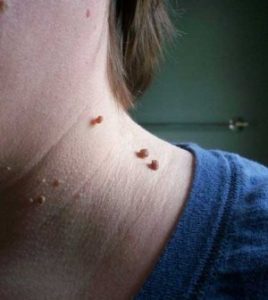
Care Tips after Removing Skin Tags
When you successfully remove a skin tag, you will need to apply some caution. This is because the skin would feel tender for some time before it completely heals.
Use an antibiotic cream or ointment on that spot to keep it from being infected, seeing it could be an open wound.
But if you went through any of the above-mentioned surgical procedures, your doctor could advise you to not get the area wet for a few days. After that, you may tentatively wash that area with water and mild soap.
However, you may want to check in with your doctor regularly if the procedure needed stitching. And if you performed a home removal and it doesn’t stop bleeding, please see your doctor immediately (source).
Important Notice
It is very important to note here that it is not advisable to remove skin tags by yourself. This is especially true if the tags are medium or large in size, or are around the eyes and genital area.
They are harmless and unless they affect your self-esteem or general aesthetics, there is no point touching them. But if you absolutely have to, please let a doctor do it (source).

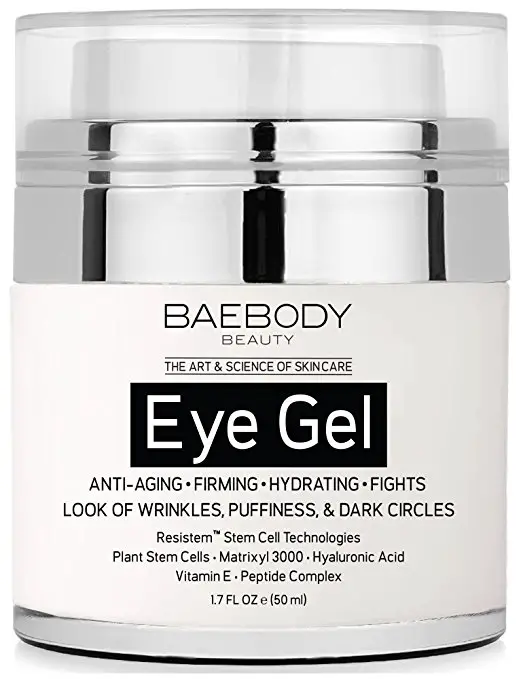
Pingback: Which Surgical Procedure Removes Superficial Skin Lesions with Scraping?